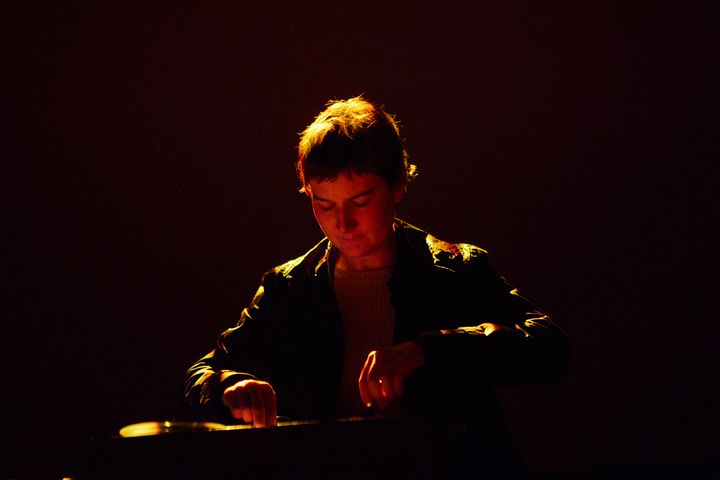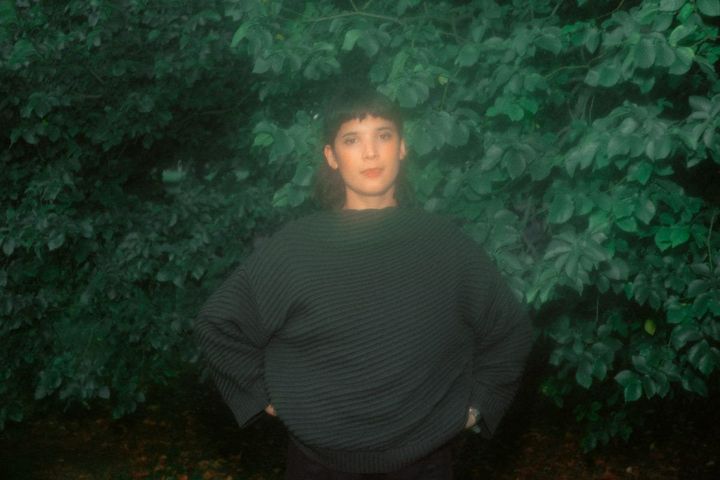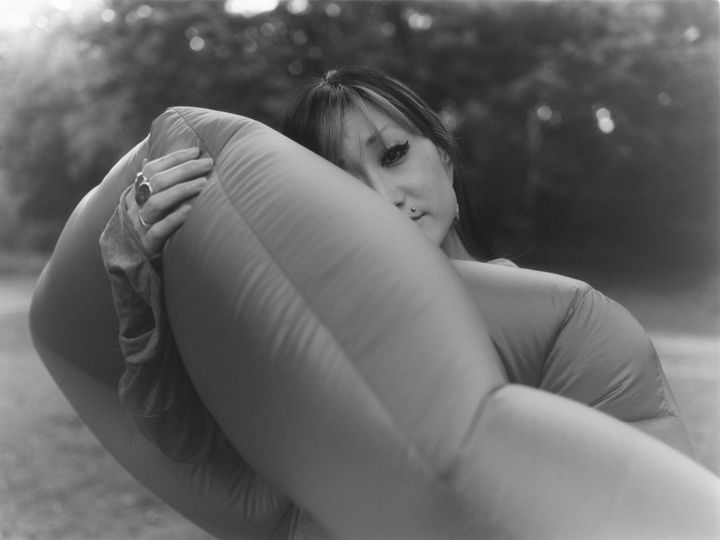Feature: Peering Into Eternity – Thoughts On The Fadeout

Meshuggah were my favourite band throughout my teens. I’d already developed a love of metal music from the age of 13, but the addition of Meshuggah’s rhythmic complexity – unusual time signatures placed directly alongside a straight 4/4 beat – resulted in the perfect combination for me. Guttural impact plus cerebral elusion: a smack in the stomach, coupled with the allure of postponed understanding.
What struck me even then was how frequently they employed the track fadeout. It’s used on half of the tracks on both their 1998 album Chaosphere and their 2002 album Nothing. The scenario is the same each time: the vocals drop out and the band strike upon a riff that repeats indefinitely. The intersecting time signatures work to obscure an obvious endpoint, as even when the 4/4 comes to a tidy conclusion, the 9/8 is only partway through and vice versa. There are only brief occasions when the band converge upon a mutual recognition of where the bars begin and end. Unable to find a way out, the studio takes over and brings the track to a close by incrementally reducing the volume. The music never truly ceases – it is the recording that ends. As a listener I never envisage the band stopping, and in my silence I imagine them to be locked within that riff eternally, like lines running in parallel and never touching.
There’s a nice article in Slate that pays homage to the fadeout in the acknowledgement of its the decline within popular music. One of the points raised, courtesy of professor David Huron, is that the fadeout is a gesture “toward the infinite”. The song transcends physical limits. In this sense, the fadeout is a symptom of the practicalities of music performance, music distribution and music listening. Bands can only sustain the energy to perform for so long; music has to adopt durational limits in order to be confined to an object or file; we don’t have an eternity to dedicate to listening to a piece of music. Composition eschews these limitations. Writing an eternal loop into a piece of music requires no more effort than bringing it to a hard stop, and so the fadeout is a concession to us as mortal actors, mortal consumers and mortal listeners. Composition can go on forever; we, as its fleshy conduits and recipients, cannot. Perhaps this is why the voice so often drops out prior to the fadeout motif, as it does with Meshuggah; we know that such an overtly human presence doesn’t have the power to sustain an eternity, and thus the fantasy of infinity is thwarted.
Fadeouts come in many different forms. There are the aforementioned “eternal motifs”, where the music enters a state from which it cannot escape. In Meshuggah’s case, this feels thoroughly mechanical. The band have always toyed with the duality between man and machine, and the arrival of an eternal riff comes with the implication that the machine has won out – the band are reduced to repetition and singular function, like robots on the production line. Dillinger Escape Plan’s “43% Burnt” has a similar quality to it, with the band trapped inside an unresolvable printer jam for the track’s concluding 80 seconds. Humanity drains from the frame, and the machine recurs without evidence of fatigue.
Another is the “eternal escalation”, where a gradient is established and then implied to continue indefinitely, like a diagonal graph line stretching away from the coordinate axis. In the most instances this involves the gradual onset of improvisation – instruments peeling away from the melody to freestyle in an ever-looser fashion – yet elsewhere there are more dramatic means of change. During the conclusion to “The Tide” by Neurosis, the guitars are gradually downtuned and the riff decelerates in tempo, giving the impression of accumulating lethargy. The music is slumping toward failure. In the case of “On Monk” by Enablers, the energy flow is in the opposite direction – the riff seems to be eternally ascending in both pitch and intensity, tracing a path toward self-induced overload. On both tracks obliteration feels inevitable, and by concealing the true nature of this event within the fadeout, our imagination paints a catastrophe that far surpasses the capabilities of the instruments and their players. As the fadeout carries the music out of earshot, question is also raised over the band’s capacity to endure: how long will it be before the composition consumes them?
There is also the premature fadeout, which snatches away a good thing just as it seems to be gaining momentum. One of the best examples is “Roygbiv” by Boards Of Canada: among the most beautiful and immediate melodies they’ve ever put to tape, dragged into silence after a mere two and a half minutes. I recall how my heart sank the first time I heard the volume declining, yet now I admire the restraint through which they protect their work. The fadeout shields their addictive motif from the degradation of over-exposure. The band have also explored the other end of the spectrum through “Farewell Fire”, which fades gradually over the course of four minutes (which, perhaps due to less-than-ideal listening conditions, has been misconstrued by many to be a prolonged period of silence). There’s an ambiguity over whether I’m hearing a slow decay toward death, or an eternity retreating into the distance – the lightbulb dims just as the screen fades to black, and I’m unsure as to which is the harbinger of closure.
Finally, there is my favourite type of fadeout: where the band stop playing before the fade has finished. I return to my beloved Meshuggah for a particularly disarming example: in the closing seconds of “Corridor Of Chameleons”, the riff comes to a sudden stop and the lead guitar hangs open for a moment. It’s like seeing a theatre actor break character just before they slip behind the curtain – the illusion is shattered, and I’m reminded that this constructed universe has hard limits too. “Perfect Circle” by R.E.M. appears to have a fadeout ending and a compositional ending all in one. As it winds down, I can hear the drums drop out and the piano pronounces a chord of resolution. This seems to imply that they originally intended to have a hard end to the piece, and that this was later changed – perhaps to better analogise the track title by sending the melody looping back in on itself?
I also want to make a brief mention of the fade-in, the sensation of which seems more than just the fadeout’s polar opposite. Noxagt’s 2014 album Brutage begins with an introductory piece where a riff that fades up over the course of a minute. In this case, infinity stretches out behind me – the band have been stuck inside this loop prior to my arrival, only breaking free once the volume level has adequately risen. There is then a loud gong, which commemorates this sacred, long-awaited unity between music and listener. The fade-in gathers meaning when one understands the history of this material. There is video evidence of the band playing this riff as far back as 2008, which reframes this introduction as the unrelenting refinement of this one riff over a period of six years; the illusion that the trio have been stuck in a loop this whole time, priming their minds into synchronicity through sheer repetition until this very moment.
The combination of the fade-in and the fadeout can produce some surreal experiences. Case in point: Ed Gein’s reprised riff during their album It’s A Shame…. The riff first emerges at the end of the second track, “The Marlboro Man Is A Douchebag”: a strange 7/8 pinball between powerchord and pinch harmonics that seems to cartwheel over itself, beginning its decline into silence only 80 seconds into the track. The riff then fades back in on the album’s final track, as a segue into an entirely different musical territory. And thus, our sense of time is corrupted. Has the riff been an undercurrent to the rest of the record, running in silent parallel to the other tracks, waiting for its moment to be summoned back into sound? Or was the first iteration of the riff momentarily banished like a boomerang, returning upon the completion of its arc?
Through these fades, I’m constantly brought back to the autonomy of music. It continues to exists independent of me, unheard yet no less present. The fade points into corridors that I can’t travel down – I can peer into the eternity and observe as the music disappears from view, awed as it surpasses the limits that border my own spectrum of experience. I’ve seen Meshuggah live on a few occasions, and there’s always a pang of disappointment when I hear a track fadeout reworked into a hard ending. The riff that carries away “New Millennium Cyanide Christ” suddenly runs out of steam. The inexorable stomp at the end of “Lethargica” stalls to a close.
Yet what’s the alternative? Instruct everyone to leave while the band are still playing? I’m led to thoughts of Ragnar Kjartansson’s audiovisual installation The Visitors, in which nine musicians situate themselves in different rooms of a large house and collaborate via headphones. Each musician starts by occupying one of the nine screens, and the piece ends with all of the players travelling out of the house together, singing the final refrain as they walk out into a field, leaving the cameras and the microphones behind. For all I know, they are still walking, still singing, somewhere far out of earshot.



